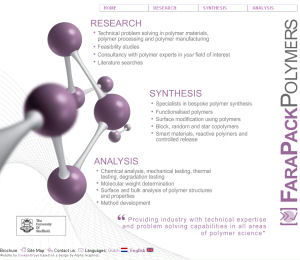
It is a dog-eat-dog world* out there, and these times of uncertainty increase the importance of a sound procurement process for all businesses. On the web design front, this means that you’ve got to get as much mileage out of your money as possible (no change there), but perhaps you should also consider getting a robust product that is going to survive even if the companies that do your websites and your software do not…**
There is still a place for plain vanilla HTML, but most websites now make use of one or more additional technologies to deliver interactive content. As a consequence many clients now need ongoing technical backup to update and develop this interactivity as a part of their business model.
At CookandKaye we use MySQL and PHP to generate interactive components based on information held on databases linked to the website. Usually these programs are offered as part of the ‘LAMP’ standard. LAMP comes from the initials of the four programs that make this standard up – Linux, Apache, MySQL and PHP. Each component does a different job:
- Linux is the operating system for the computer on which your server software is running.
- Apache is the server software, and actually handles the web requests, and ensures that your web pages are delivered as required.
- MySQL provides fast SQL compatible database services to your website. We also work with PostgreSQL when necessary, as this has better compatibility with geospatial applications than MySQL.
- PHP provides the code that lets your web pages speak to the server and the database, pulling all the bits together into a seamless HTML web page. PHP runs on the server, not your visitor’s computer, so your visitor only needs a browser capable of displaying simple HTML to get all the interactivity you require!
The popularity of this standard means that any customer buying a bespoke interactive website has the security of knowing there are an awful lot of programmers out there who they can fall back on should anything go wrong. An additional advantage is that all of this software is open-source. This means that you have full rights to your website – not your web designer, no trickily worded license deals, no hidden fees…
Not only do these technologies give you considerable security for a bespoke product, if you have them on your server you also have access to an amazing library of ‘off the peg’ applications including blogging tools, galleries, content management systems, bulletin boards… These can all be integrated with your existing website, or they may do everything you need on the web!
We use the LAMP standard because we believe it is the only sensible choice for bespoke web design for most SME’s, and it is a damn site better choice than a lot of the stuff larger enterprises are using! Don’t just take our word for it though, look at the TIOBE or Scriptol indices (or do your own research on Google!):
TIOBE Programming Community Index
Scriptol, popular programming languages
*A saying, which, if accurate, probably implies that things are not too bad, as our dog definitely prefers biscuits…
**Remember when you wrote your first business plan? If one of your suppliers lets you down, can you get the widgets you need elsewhere at a comparable cost? This thinking shouldn’t just apply to widgets…

